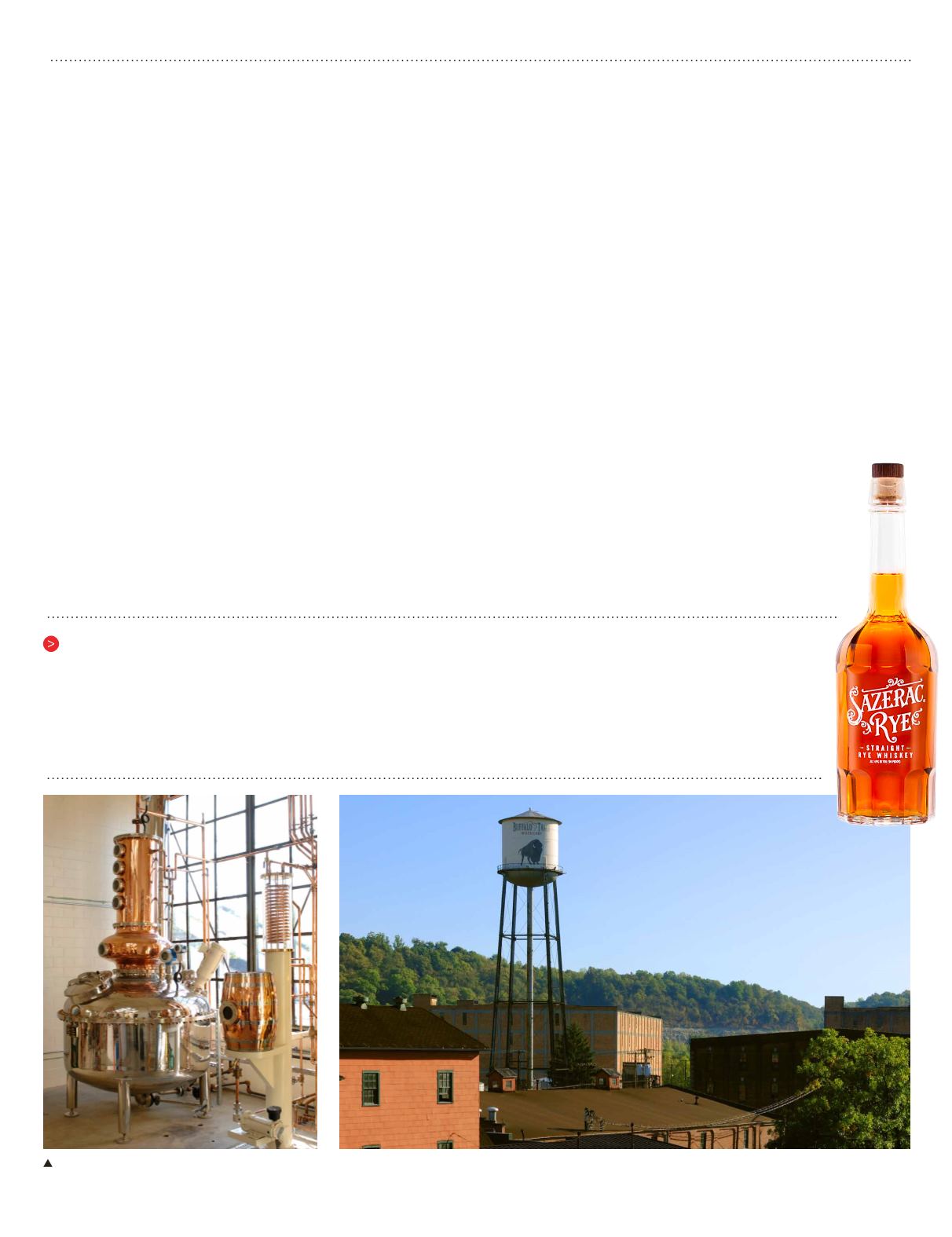

10
MY
ROUSES
EVERYDAY
JULY | AUGUST 2016
the
Cocktail
issue
A Family Business is Born
“I’ve never thought of doing anything else,”says the third generation
Goldring, recalling his desire to work for his father in the family
business. The father insisted the son first get a college education,
and so Bill did, finishing Tulane University in three years, a business
degree in hand. He honed his beverage skills for a year, working for
Seagram’s in New York, New Jersey and Maryland, always with an
eye on returning home to work under his father’s tutelage.
And so he did,andwithin five years the younger Goldring had earned
the role of executive vice president of Magnolia, responsible for all
day-to-day operations of the growing company. He assumed the
role of Chief Operating Officer in 1972 and renamed the company
Magnolia Marketing Company, while growing and expanding the
company’s holdings. He succeeded his father as president in 1982
and was named chairman of the company in 1991. He also was
named chairman of the Sazerac Company. Under Bill’s leadership
and vision, the businesses experienced unprecedented growth and
acquisitions, eventually evolving into one of the nation’s largest and
most successful wholesale liquor and distribution companies.
Along the way, there were corporate name changes and mergers
as well, and by 2006, Goldring’s business interests were under the
banner Republic National Distributing Company.
The year 2010 found Goldring reevaluating his future, and he shifted
his attention to The Sazerac Company, which had experienced
steady growth since his father’s days at the helm of Magnolia.
Goldring wanted to strengthen his acumen as a distiller. At a time
when most men of his age may have considered retirement, perhaps
to perfect his already sharp skills on the tennis court, Goldring
immersed himself in his newest business interests. And the quest
for the Holy Grail continued.
Today, bottles of Sazerac brands line shelves of retailers across the
nation and the world.
“As a distiller you sell your own brands, and as of today we produce
over 300 brands, and are in all 50 states and over 100 countries,”
Goldring says, his modesty on display as he delivers this statistic
with his trademark unassuming manner. And his holdings continue
to grow;The Sazerac Company is one of America’s largest distillers,
and still proud to call New Orleans home.
“It’s eat or be eaten,” he says, explaining a part of his business
philosophy. “I’m always looking for opportunities to expand,
especially abroad, to have as much business outside the United
States as in, and we are getting there.”
Goldring recently acquired two more major brands—the iconic
Southern Comfort, and Paddy Irish Whiskey, a triple
distilled blended Irish whiskey produced in Cork, and
one of the top selling Irish Whiskey brands in the world.
And in January 2016, The Sazerac Company resurrected
the beloved Ojen (pronounced O-hen) brand, a sweet,
anise-flavored liqueur and long a favorite in New Orleans
during Mardi Gras. Production of Ojen ceased at a
Spanish distillery in the 1990s leaving the product out of
the marketplace until Sazerac developed its own version.
Sazerac Rye
American rye whiskey dates back to the late 1700s around the time distillers in the Northeast were shipping their whiskey
downriver to New Orleans. By the 1820s, bars disguised as coffee houses began popping up all over New Orleans. In the 1850s The
Sazerac Cocktail, America’s first cocktail and now the official cocktail of the city of New Orleans, was invented at the Merchants
Exchange Coffee House on Exchange Alley in the French Quarter, which later became known as the Sazerac Coffeehouse. The
cocktail’s original recipe featured Sazerac-de-Forge et Fils (a cognac), and Peychaud’s Bitters. Cognac was eventually replaced
with American Rye, and a dash of Absinthe was added. In the 1930s bartenders substituted Herbsaint for absinthe.
Buffalo Trace Distillery
















